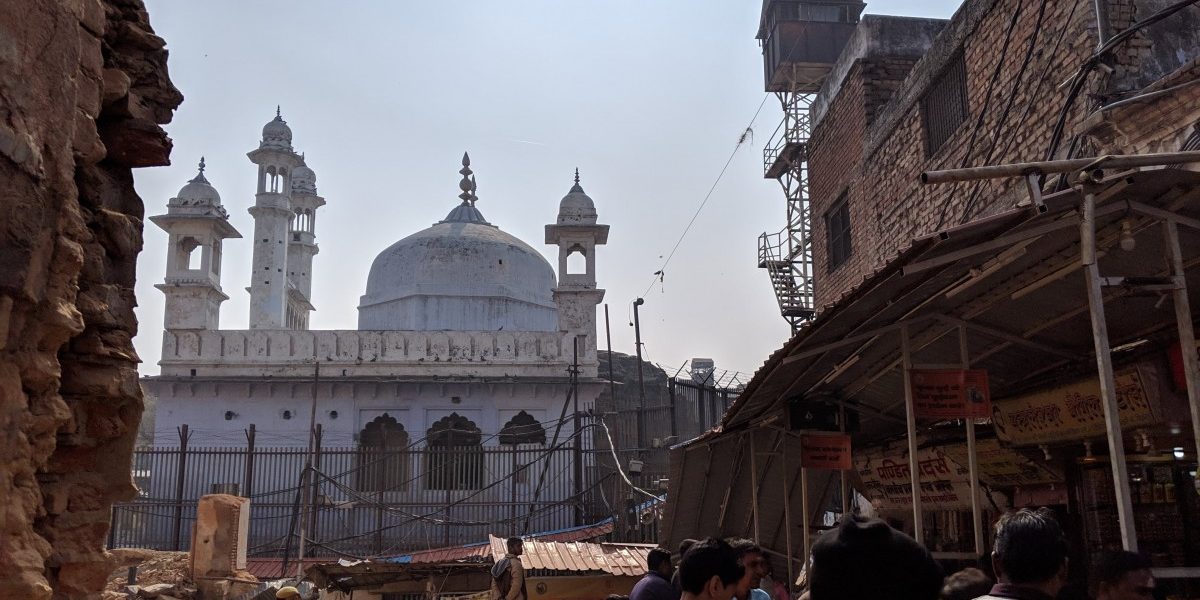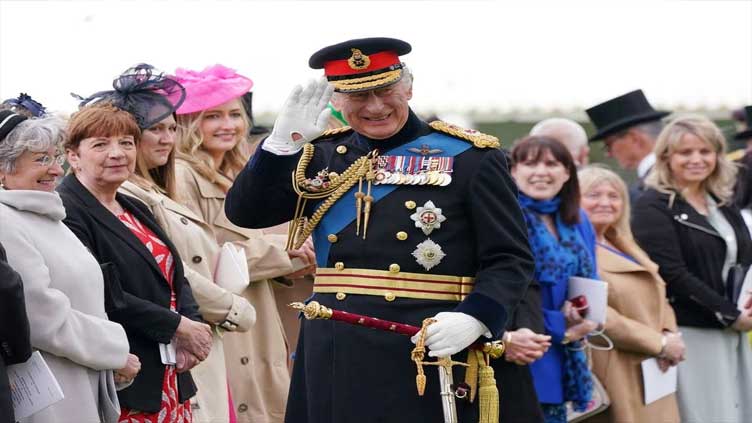
New Delhi: A Varanasi civil court ordered the Archaeological Survey of India (ASI) to ‘survey’ the Gyanvapi Mosque located next to the Kashi Vishwanath Temple after petitioners representing the temple claimed that the land on which the mosque stood actually belonged to them.
The petition was opposed by the Gyanvyapi Mosque management committee, Anjuman Intazamia Masazid, LiveLaw reported.
The Varanasi court’s order upends the Places of Worship Act of 1991, which declared that “the religious character of a place of worship existing on August 15, 1947, shall continue to be the same as it existed on that date” and that “no suit, appeal or other proceeding with respect to … such matter shall lie on or after such commencement in any court, tribunal or other authority.”
The law was passed in the wake of the agitation underway at the time by Hindutva groups for various mosques – including the Babri Masjid in Ayodhya, the Gyanvapi mosque in Varanasi and the Idgah in Mathura – to be converted into temples. The 1991 Act excluded the Babri Masjid from its purview since a civil suit was already pending but barred any fresh attempts to convert an existing place of worship from one religion to another.
The Supreme Court has admitted a number of challenges to the constitutionality of the 1991 law, including two filed by Bharatiya Janata Party MPs, but the law remains in force.
The court held, according to Bar and Bench,
“A large number of persons including Indians and Non-Citizens, belonging to two religions are equally in knowing the truth of the cause of action of the plaintiffs as well as of the defence of the defendants…The circumstances in the case in hand are such that none of the parties are in a position to lead direct evidence to prove their assertions and counter assertions, as at presently hardly any person would be alive to come and testify before this court…
…This court is of the view that since the defendants have outrightly denied the factum of demolition of the temple of Lord Vishweshwara in obedience of farman of Badshah Aurangjeb at the disputed site and subsequent conversion of the same into a mosque, hence in these circumstances it is incumbent on the part of this court to find the truth.”
The bench also dismissed the defendants’ argument that revenue records proved the mosque was not on disputed property.
“…a revenue entry is not conclusive piece of evidence establishing the title of the person whose name has been mutated…A successful challenge can potentially compel the revenue authorities to bring necessary alteration in the revenue records…”
In addition to a physical survey by the ASI, the court also ordered that a five-member committee be constituted comprising experts in archaeology. Two of the members should ideally be from the minority community, the court said.
According to Bar and Bench, this committee is supposed to “find out whether the religious structure standing at the disputed site is a superimposition, alteration or addition or if there is structural overlapping of any kind over any other religious structure. If there is any such structure, the Committee is to examine the age, size, monumental and architectural design or style of the religious structure standing at the disputed site and what materials were used to build the same. The Committee is to trace if any temple belonging to the Hindu community ever existed before the mosque was built or superimposed or added at the disputed site. If so, the Committee is to find out the age, size, monumental and architectural design or style etc. and what Hindu deity or deities the same was devoted to.”
During the survey and other research, the court held, Muslims must still be allowed to offer namaz at the site. However, the public and media will not be allowed to watch or be briefed about the survey proceedings. The results of the survey are to be given to the court in a sealed cover.
The temple side’s claims
The temple side’s petitioner, Vijay Shankar Rastogi, along with four others, claims that the Gyanvapi Mosque came up in 1669 after Mughal emperor Aurangzeb pulled down a portion of the 2,000-year-old Kashi Vishwanath Temple. Rastogi said he has filed the petition in his capacity as the next friend of the Ancient Idol of Swambhu Lord Vishweshwar.
The petitioners claimed that it was King Vikramaditya who had built the temple about 2050 years ago in the middle of where the Gyanvapi Mosque currently exists and consecrated idols of Lord Vishweshwar. It was partly pulled down several times during the Muslim rule in India, the petitioner said.
In 1669, the petitioner argued, Aurangzeb had demolished several schools and temples along with the temple in question based on “wrong information” that “wicked science is being taught”. He further said that the same account was substantiated by Ma Asir-I-Alam Giri in Arabic printed in 1871 by the Asiatic Society of Bengal.
“According to Muslim law, it is not lawful to offer prayers on the land of another person without his consent and also the Muslims are not lawful to offer prayers over the land occupied by the temple of Lord Visheshwar,” Bar and Bench quoted the petition as saying.
The petitioners presented a historical account to try and prove that the piece of land belonged to Hindus and the temple in question. According to them, a riot took place between Hindus and Muslims in 1809 at the Gyanvapi compound when Hindus forced Muslims out of the land.
Compensation was served on the mosque after the riots, and disputed land was given away to Hindus in 1928. Thereafter, according to petitioners, several riots took place in the area when successive district magistrates had allowed Muslims to offer prayers within the disputed structure, without “[affecting the] civil right of the plaintiffs”, meaning the rights over the property rests with the Hindus or temple authorities.
The petitioners alleged that Muslims, protected under administrative orders, had performed namaz within and even beyond the limits of the disputed structure, which was protested by the Hindus.
“The ground floor cellar of the site is still in possession of the plaintiffs and the structure standing over it (mosque) is illegally being utilised by the Muslims in respect of which they have no right, title or interest of any kind whatsoever,” the petitioners alleged.
The petitioners claimed that the reason for the present petition dates back to October 13, 1991 when Muslims had declined to let Hindus take possession of the “illegal structure”.
In the wake of the above reasoning, the Hindu side petitioned that the Muslim occupation of the land in question be ruled illegal, and the same be restored to the temple authorities.
The court ordered the Uttar Pradesh government to carry out a survey of the Gyanvapi Mosque by ASI and to bear the expenses for the same.
In a statement issued in the evening of April 8, Zufar Ahmad Faruqi, chairman of the Uttar Pradesh
Sunni Central Waqf Board said that the order of the Varanasi judge would be challenged before the High Court.
“Our understanding is clear that this case is barred by the Places of Worship (Special Provisions) Act, 1991. The Places of Worship Act was upheld by a 5 judge Constitution Bench of the Supreme Court in the Ayodhya judgment. The status of Gyanvapi Masjid is, as such, beyond question.”
Even otherwise, said Faruqi, the order of an ASI survey “is questionable because technical evidence can only supplement certain foundational facts.” He said that no evidence has been produced before the court that suggests that there was a prior existing temple at the site of the mosque. “Even in the Ayodhya judgment, the ASI excavation was ultimately of no use. The ASI did not find proof that the Babri Masjid was built upon demolition of a temple. The Hon’ble Supreme Court has specifically observed that there was no such evidence.”
Faruqi added that “this practice of mosques being ‘investigated’ by the ASI has to be stopped.” The Wire


